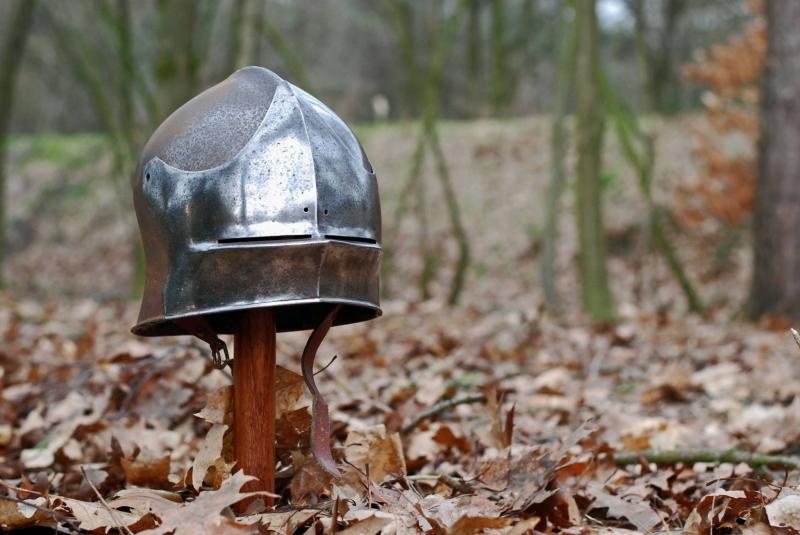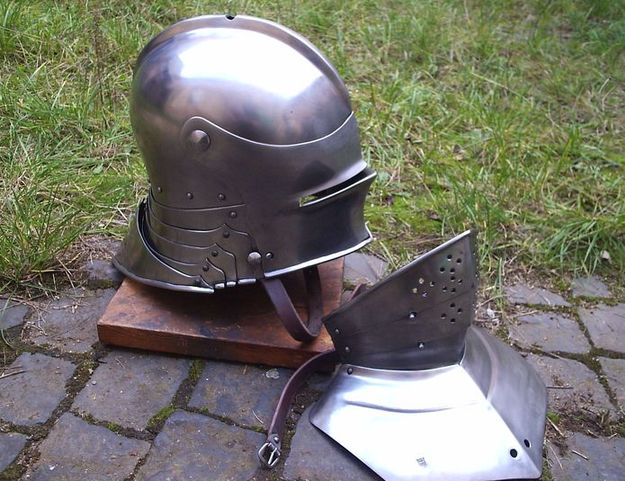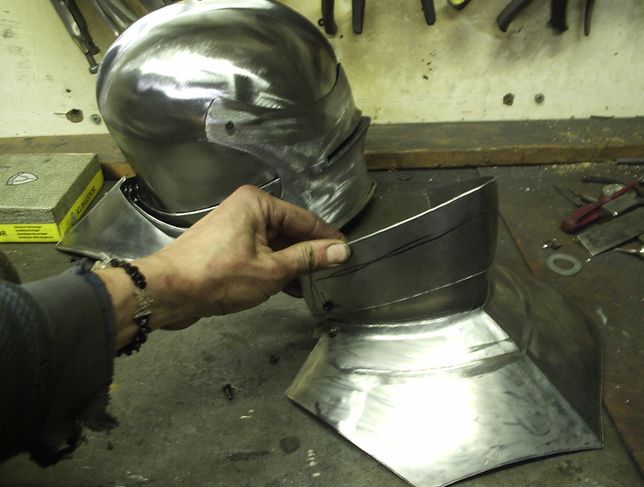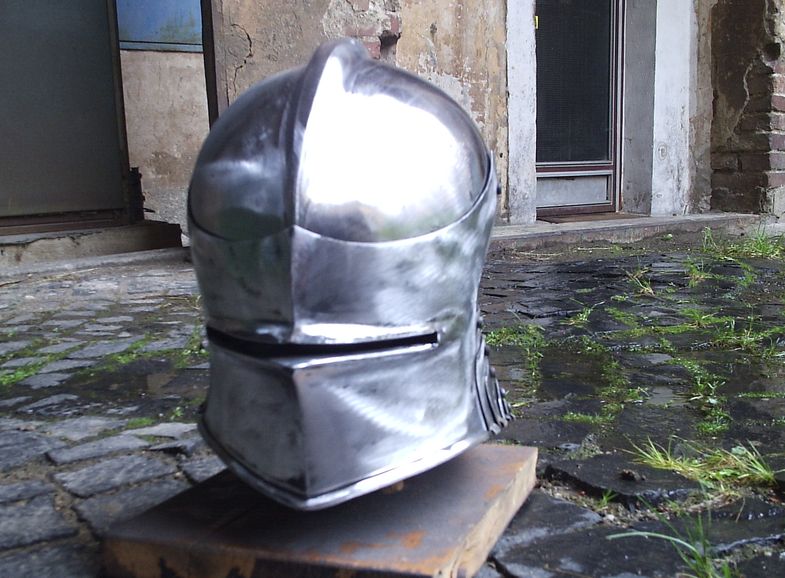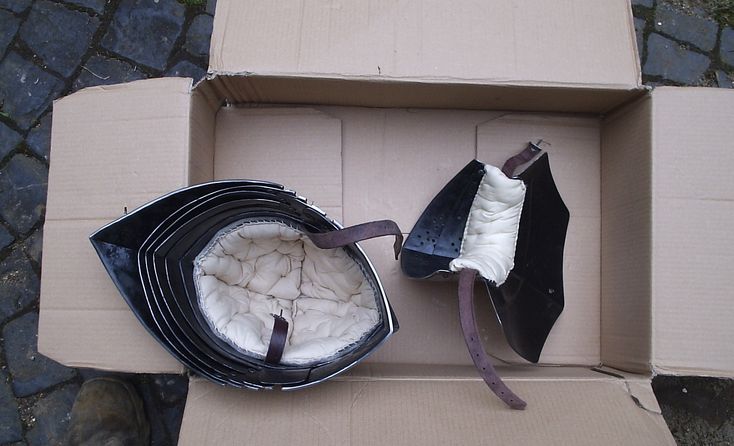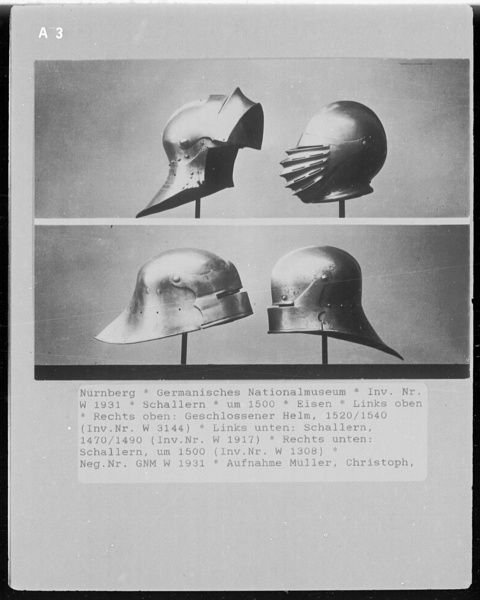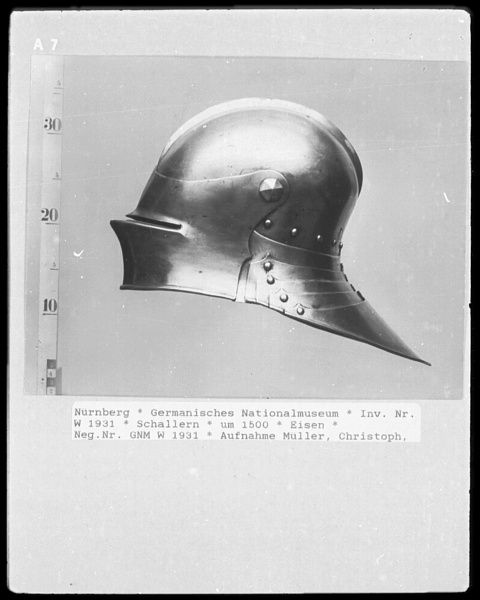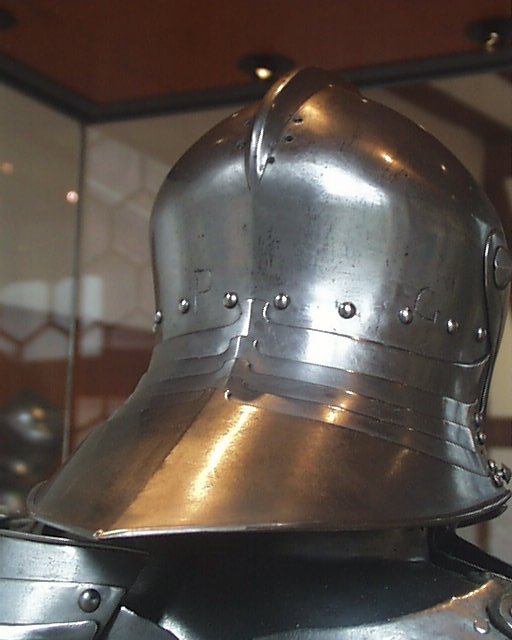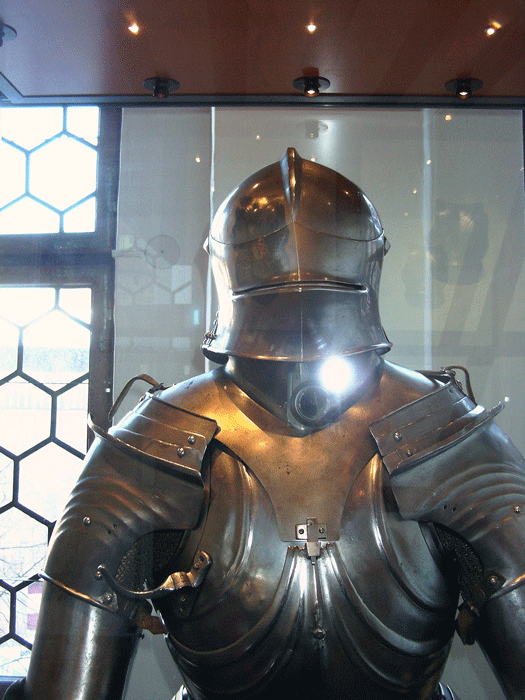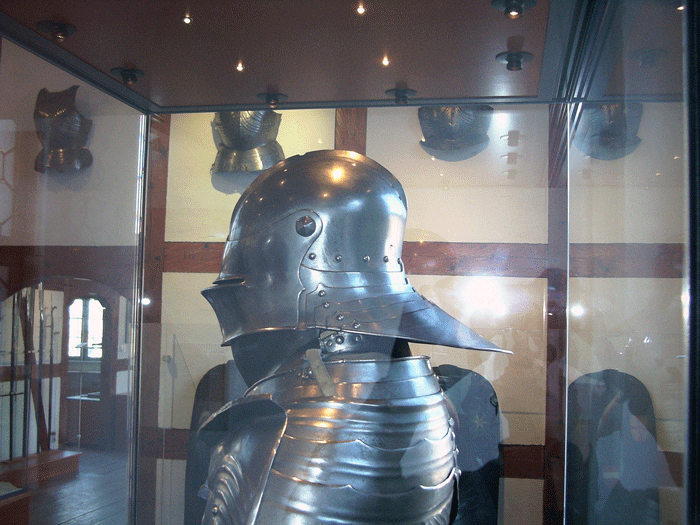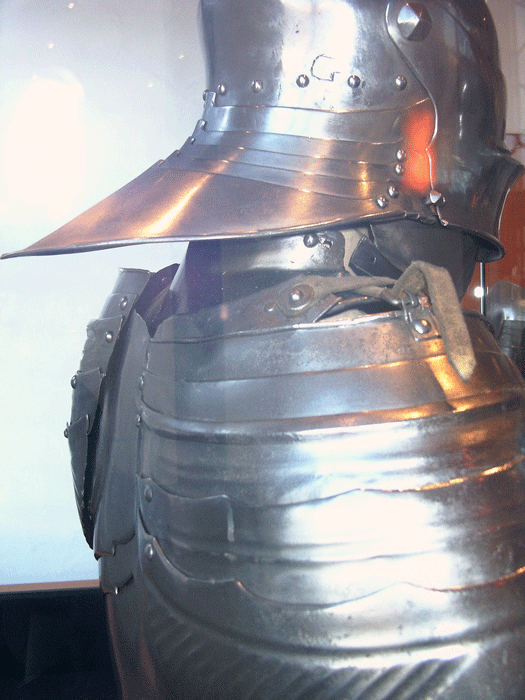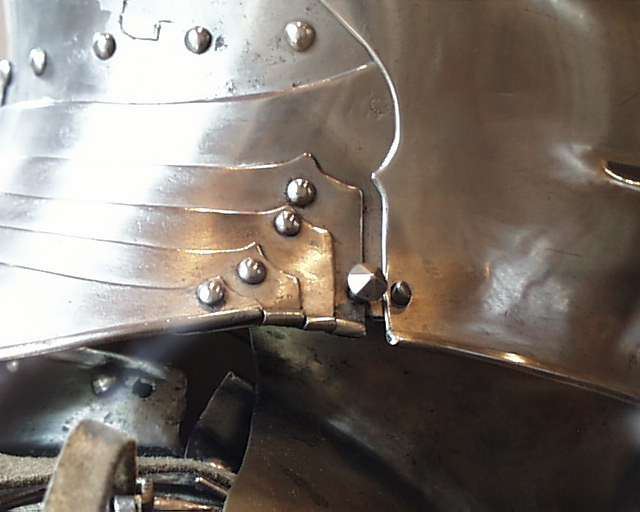Hi Felix,
I've just had a look through my collection of historical sallet images. The only non-'black' sallet I found with what we might call 'two eye slots' is the Castle Žleby sallet below. As with 'black' sallets, this one dates from fairly late in sallet development.
[ Linked Image ]
There are other deep-visored sallets which also have the two eyeslots, which you can see on the
Painted armour thread. If there are any others, I'd also be interested to see them.
Looking at these again, it raises an interesting, if possibly pedantic question: some of these sallets clearly seem to have two separate eye slots, as we see on other types of helmet design, while some look more like a single occularium with a reinforcing piece in the middle. I've not seen a discussion about this before, and am not sure whether there are significant differences in the design and construction between them ... or if it even really matters!
On another note, I think we need to be a bit cautious in linking 'black' sallets with munition armour. Black sallets come in for a lot of bad press, usually because some are thinner-gauge metal, and their finish is considered 'rough'. However, as some researchers have noted, they were usually covered with paint, fabric, or possibly both; this would both add to their resilience, as well as have a far different outer aesthetic than (some of) the ones that have been left to us without their coverings. There are also theories that they might have been used in slightly different contexts than the earlier, heavier types. Having said that, some black sallets have very similar finishes to what we see in extant earlier sallet forms (though whether this is the result of overzealous
polishing at some point in their past, I don't know).
We also have the multiple images of Dürer, which show black sallets - some of which appear to be highly customised - worn with high-quality armour.
Finally, I often wonder if part of the derision that some have used when discussing black sallets is simply a matter of aesthetics - if you appreciate the form and skill in making an earlier visored sallet that has a close-fitting visor, and a bowl that transitions beautifully from fitting the back of the head to a tail, then the 'double ski-jump' effect of the angled visor common on black sallets, and the fairly straight tail, can seem a bit crude at first blush. However, the more I look at the lines involved - and having seen the progress photos of a smith making my black sallet - I realised that the visor design is in some ways more complex than earlier sallets - and making it to allow the fitting of the velvet cover is a high skill indeed. Just some thoughts.
